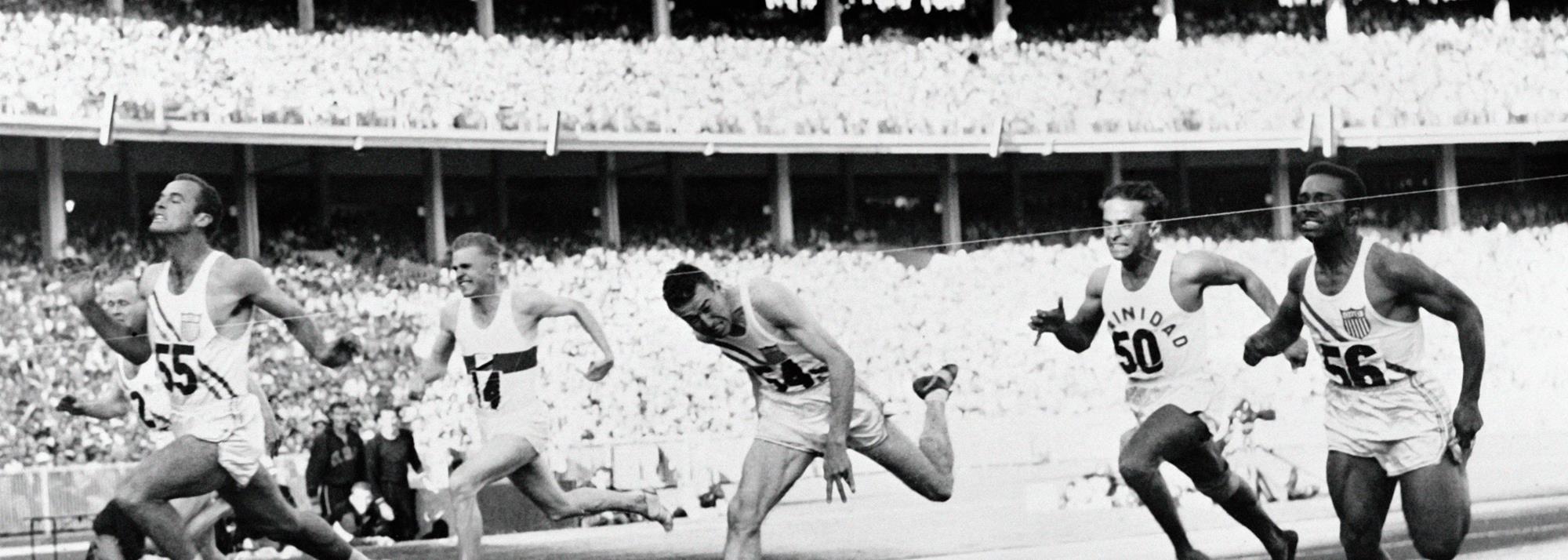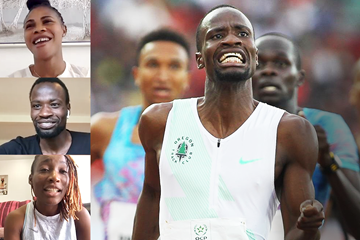World Athletics is deeply saddened to hear that Bobby Morrow, winner of three gold medals for the USA at the 1956 Olympic Games, died on Saturday (30) at the age of 84.
During a relatively short career, he set 14 ratified world records. He remains one of just four men to win Olympic 100m, 200m and 4x100m gold at the same Games, alongside Jesse Owens (1936), Carl Lewis (1984) and Usain Bolt (2012 and 2016).
Born in Harlingen in October 1935 and raised on a farm in San Benito, Morrow first put his natural speed to use when playing football at high school, but he later focused on sprinting.
His early promise attracted the attention of several California-based universities, the powerhouses in collegiate sport at that time. But Morrow declined their offers and decided to stay in his home state of Texas, where he attended Abilene Christian University.
He soon became the standout performer on the university athletics team, led by Oliver Jackson. “Bobby had a fluidity of motion like nothing I’d ever seen,” Jackson told Sports Illustrated. “He could run a 220 with a root beer float on his head and never spill a drop. I made an adjustment to his start when Bobby was a freshman. After that, my only advice to him was to change his major from agricultural sciences to speech, because he’d be destined to make a bunch of them.”
Jackson was right in his assessment and Morrow went on to win 80 of his 88 individual races during his time at Abilene Christian University.
In 1956, Morrow – aged just 20 at the turn of the year – enjoyed the greatest season of his young career. Having won the 100m and 200m double at the NCAA Championships and then at the US Olympic Trials, Morrow lined up as one of the big medal favourites at the Olympic Games in Melbourne.
He contracted a virus just days before the Games, which led to him losing 10lb in body weight, but even that couldn’t stop Morrow. He comfortably won the 100m – into a stiff -2.5m/s headwind – and three days later, competing with strapping on his thigh, he equalled the world record of 20.6 in the 200m to take his second gold of the Games.
Morrow capped his Olympic campaign with a third gold medal and another world record, this time when anchoring the USA to victory in the 4x100m. Their winning time of 39.5 broke a world record that had stood for 20 years to the winners of the 1936 Olympic title, a team that was anchored by Jesse Owens.
His achievements in 1956 led to Morrow being named the Sports Illustrated ‘Sportsman of the Year’.
Morrow went on to achieve more success in 1957 and 1958, winning national titles and setting world records. He retired at the end of 1958 but returned to action in 1960 in a bid to qualify for the Olympic Games. Having equalled his lifetime best of 10.2 in April that year, a groin injury prevented Morrow from competing at the US Olympic Trials and so he missed out on an individual Olympic berth. He was told there may be a spot available as a reserve, so he continued to train with the rest of the team in Los Angeles and started rounding into good form. But after travelling to the airport on the day the team headed out to Rome, he was informed he hadn’t been selected for the squad.
Somewhat humiliated by that experience, and having grown disillusioned by the way amateur athletes were treated, Morrow retired from the sport. He spoke about these frustrations at an audience with Bobby Kennedy and at a US Senate hearing, but they yielded little to no change.
Post retirement, Morrow retreated from the limelight and returned to his home town of San Benito, working as a farmer and woodworker. In 1989 he was inducted into USA’s National Track and Field Hall of Fame. In 2006, San Benito High School named its new 11,000-seat sporting facility after Morrow.







 Countdown
Countdown





